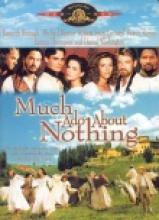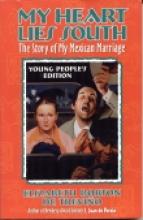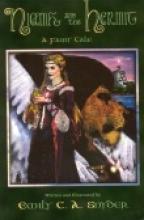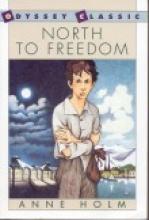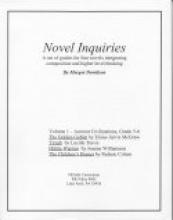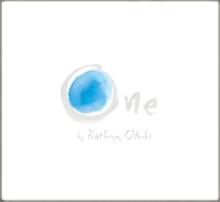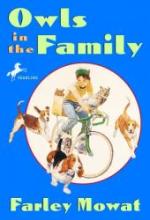Literature
Much Ado About Nothing
During the credits, the men and women (who are in separate places) are shown bathing and dressing up while preparing to meet each other after the men had been away at war. While this is done in a fairly innocent manner, there are plenty of naked "backsides" in this scene.
There is a small scene during the costumed party involving a couple who are not behaving themselves very well. It does help establish their characters which play an essential role in the story. Although it is not terribly graphic (and might go unnoticed by small children), it is probably not suitable for younger viewers.
Directed by Kenneth Branagh, PG-13, 1 hr. 51 min., Color
Starring: Kennegth Branagh, Michael Keaton, Keanu Reeves, Emma Thompson and Denzel Washington
My Heart Lies South
This story is delightful for its own sake, but also gives tidbits of history (Mexican and Spanish), religion, and culture. It is also the sort of book that is useful and delightful for teenage girls to read as they begin to consider their future roles as mothers, wives and influences on their community. (The humorous incidents will probably keep it interesting enough for the guys as well.) There are some references to dating and courtship, the consequences of drinking too much and other subjects which would not be suitable for young children (although they are handled in a reasonable manner). Don't be turned off by the word "seduction" that shows up in the first few pages. It comes up in a fairly harmless context and is not an indication of shocking material to come.
I also found her discussions of parenting interesting because she was raising her children at a time when American doctors advocated bottle feeding and a sort of detached parenting . When she wrote the story, however, the doctors had begun to come around to a healthier and more natural parenting philosophy and the author expresses some of her regrets and frustrations at following the conventional wisdom which really went against her instincts.
Her arguments in favor of the Mexican view of the role of women is quite compelling. The Mexican role is, in many ways, very Catholic. Women are not inferior or subservient (as in the "Leave it to Beaver" American model of the 1950s) nor do they feel the need to fight for "equality" as in the American feminist model of today. The Mexican women have (or perhaps had) a very strong and dominant role within the family which was the center of society. They liked to make their husbands feel manly by allowing them to help them because it made them better husbands and companions. Although the author does not fully embrace every particular of the Mexican customs in this regard, she sees them generally as the women's way of cunningly "allowing" the men to feel superior in order to keep them happy while almost always having the final word.
Niamh and the Hermit
North to Freedom
Translated from the Danish by L.W. Kingsland
This unusual, but engaging narrative tracks the journey of a young boy as he escapes from a Communist prison camp in Easter Europe, travels by boat to Italy, and gradually makes his way north to Denmark. The story shows the development of the boy's understanding as he begins to grasp the idea of freedom and what makes life worth living. The writing is very good and very thoughtful. The story explores the differences in culture and character of the various countries he visits and invites fruitful discussion about the themes of freedom and good and evil. Readers will find it interesting to follow David's journeys on a map and do further research about Communism. There is one odd statement about the Blessed Mother that might seem somewhat offensive (it is one of the misconceptions non-Catholics sometimes have about Catholic belief) but is certainly not dangerous - it may even be helpful in providing a tangential discussion on misunderstandings about the Church. In following the geography of the story, it will be helpful to know that the city of Salonika is also known as Thessalonika.
Novel Inquiries, Volume 1: Ancient Civilizations, Grades 5-6
This set of study guides for grades 5-6, written by a Catholic homeschool mother of five, provides a literary guide with in-depth study questions, writing assignments and analyses for four historical novels on Ancient Civilizations: The Golden Goblet by Eloise Jarvis McGraw, Tirzah by Lucille Travis, Hittite Warrior by Joanne Williamson and The Children's Homer by Padraic Colum.
This guide and future editions that are in the works are designed to provide a literary and writing component to the upcoming Catholic History program Connecting with History: a Guide to Salvation History, Bible History and Ancient Cultures by Sonya Romens and Andrea Chen (see http://www.rchistory.com for details). Novel Inquiries, however, does not rely upon Connecting with History and could certainly be used independently as well.
Mrs. Davidson, an experienced literature teacher and an alumna of Thomas Aquinas College, provides individual guides for teachers and for students in one volume.
First, the introduction offers helpful and practical advice on ways to use a novel in education, helping students learn to extract themes and meanings from the story, handling the study of vocabulary and "getting through the novel". The teacher section itself offers an in-depth story synopsis which highlights important themes from each novel. A "Directing Student Activities" segment offers tips on helping the student get the most out of the novel, explanations of how the novel fits into the Connecting with History program, basic instructions for getting through the various student components of the guides and ideas for post-reading research and activities. A final page offers ways to reflect on all of the books together after having completed the entire study (which is intended as a year-long undertaking). Having read two of the titles (The Golden Goblet and Hittite Warrior) before reading through these study guides, I'd like to say that I'm impressed with the depth and scope of what Mrs. Davidson is able to draw out of each of these stories. Her synopsis and comments brought out excellent points and themes that I had not recognized when I read the novels myself.
The student portion (all but 28 pages of the book) offers guides that vary slightly in focus from story to story both to suit the nature and difficulty of each book and to offer some variety to the course.
The Golden Goblet study guide begins with some short but helpful assignments to complete before starting to read the story (in recognition of the Ignatian/Classical method of prelection - a sort of previewing of the material before beginning). Some tips for "while reading the story" offer ideas for things to think about while reading the story and suggestions of things to jot down in a reading log as the story progresses. The vocabulary section for this novel is rather extensive (four to eight words for each of the sixteen chapters) and covers words such as "ingratiatingly", "menial", and "citadel". Several thoughtful "questions for reflection" for each chapter invite students to think carefully about and draw conclusions relating to the story and predict what will happen next as well as simply relating portions of the storyline. Five "questions for the end of the story" invite students to reconsider some of their conclusions drawn while reading the story and reflect on overall points and themes of the story. The final section offers three in-depth writing assignments complete with pre-writing assignments and tips for revising and editing each segment. These assignments are both interesting and creative and help students to develop good writing techniques and study habits as well as get more out of the story.
The study guide for Tirzah is a little simpler because the writing style is easier (there are no vocabulary lists for this book). The guide provides "Before reading" and more in-depth Reading Log Instructions that cover larger segments of the book (up to six chapters at a time). These assignments give the students related Bible passages to read and provide other ways of reflecting upon and getting more out of the story. Seven questions for the end of the story help students consider general themes from the story (relating to forgiveness, obedience, prejudice, faithfulness, etc.). The four writing assignments (similar in nature to those assigned for the Golden Goblet), allow students to practice literary techniques, explore the main ideas of the story, consider the virtues possessed by important characters in the story and creative writing ideas.
The Hittite Warrior study guide is similar in nature to the one for the Golden Goblet, providing assignments for before and during reading, vocabulary lists, reflection and discussion questions for nearly every chapter, questions for the end of the chapter and five in-depth writing assignments relating to the story (this guide also offers an "exploring history" report-writing assignment).
The guide for The Children's Homer offers assignments for before and during reading, vocabulary lists, questions for reflection for the end of each section and questions for the end of the story. The writing segment covers the literary device of "flashback", explores characters and themes from the book and provides some creative and artistic extra activities relating to the story
The appendices offers several types of writing samples, charts for mapping theme essays, charts for character analysis and rather detailed teacher/parent guidance for evaluating student writing.
This very impressive guide provides a helpful way of incorporating history, literature, vocabulary and writing. It should also prove to be a wonderful resource for parents who are nervous about guiding their children through the complexities of good writing. Future titles in the works will offer ancient culture volumes for Grades 7-9 (covering the novels Mara Daughter of the Nile by Eloise Jarvis McGraw, Warrior Scarlet by Rosemary Sutcliff, Phaedo by Plato, and Caesar's Gallic Wars by Olivia Coolidge) and Grades 10-12 (Epic of Gilgamesh edited by John Gardner, Til We Have Faces by C.S. Lewis, Oedipus Rex by Sophocles and Julius Caesar by William Shakespeare).
Novel Inquiries, Volume 2: Ancient Civilizations, Grades 7-9
Volume 2 carries on the tradition of excellence described in the review of Volume 1, with many additional features for the middle grade student. The 43-page Teacher's Guide is separate from the 136-page Student Book at this level. This volume includes literature guides for Mara, Daughter of the Nile by Eloise Jarvis McGraw, Warrior Scarlet by Rosemary Sutcliffe, The Tale of Troy by Roger Lancelyn Green, and Caesar's Gallic Wars by Olivia Coolidge.
The Teacher's Guide addresses the goals of literature study in general as well as specific goals and needs for this age group. In addition, the author has written a story synopsis and theme as well as detailed assignment instructions for the teacher for each of the novels. The numerous suggested assignments range from journaling and outlining activities to graphic organizers to compositions to discussion exercises to art projects. However, my favorite part by far is the appendix! The description of the writing process and instructions for evaluating various types of student writing are invaluable when used with the student writing samples. It is one thing to read a list of details that should be a part of a student's writing, but it is much more helpful to actually read the student's work alongside the lists.
The Student Book is a comprehensive literature study guide tailored to the developmental needs of the 7th to 9th grade student for each of the four novels as well as a section to complete at the end of the study of all four novels. Each novel's guide includes a "Before Reading" set of activities, "While Reading" set of activities, "Questions for Discussion at the End of the Story", and "Writing Prompts for the End of the Story". Especially appropriate to the target age group are the numerous graphs employed to help the student organize a pertinent information. The student is taught to use "Mind Maps", graphic-based webs for character analysis, and charts and Venn diagrams. My 8th-grade student found the chart formats to be very helpful and enjoyable to use. Writing activities taught include character essays, theme essays, speeches and scripts, autobiographical and biographical narratives, poetry, and opinion papers. The student's appendix also contains many examples of student assignments to help guide a more inexperienced student to a successful writing project.
This series is a terrific contribution to the curriculum now available for Catholic homeschoolers and fulfills a genuine need for literary analysis guides. It is so refreshing to be able to simply pick up the book and get to the work of educating my children without worrying about hidden bias and doctrinal errors. Congratulations to the author!
One
Our own Number Seven has read this new picture book aloud to me countless times since I picked it up at the library last week. She loves it! Perhaps it is because the numbers in the story stop at seven... or more likely it is because the book gives the colors personality and emotion, creating interesting twists to a fun story.
Product Description:
Blue is a quiet color. Red’s a hothead who likes to pick on Blue. Yellow, Orange, Green, and Purple don’t like what they see, but what can they do? When no one speaks up, things get out of hand — until One comes along and shows all the colors how to stand up, stand together, and count. As budding young readers learn about numbers, counting, and primary and secondary colors, they also learn about accepting each other's differences and how it sometimes just takes one voice to make everyone count.
A couple of sample pages:


Othello
Written c. 1601-1604
Many editions available. "Interleaved" editions (original text with notes on facing page) are helpful.

